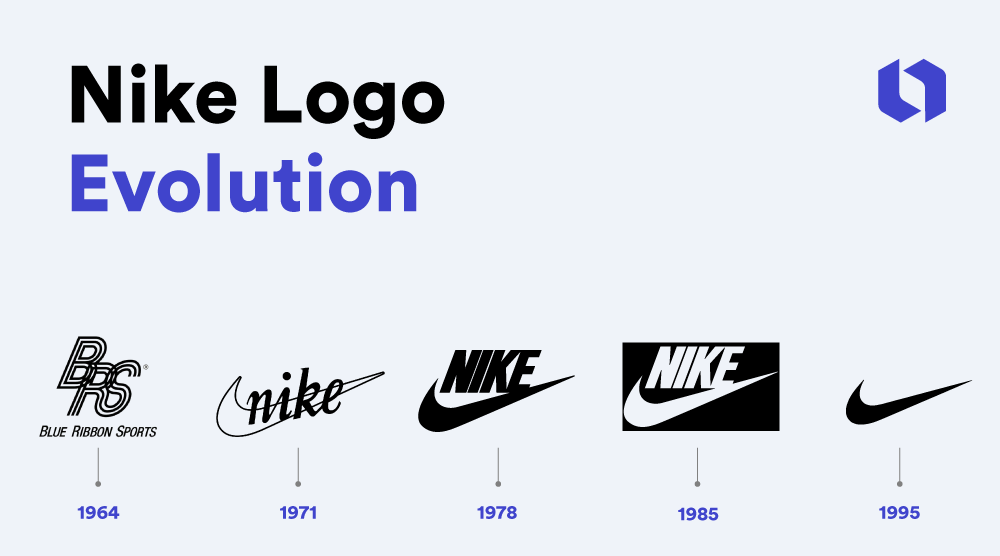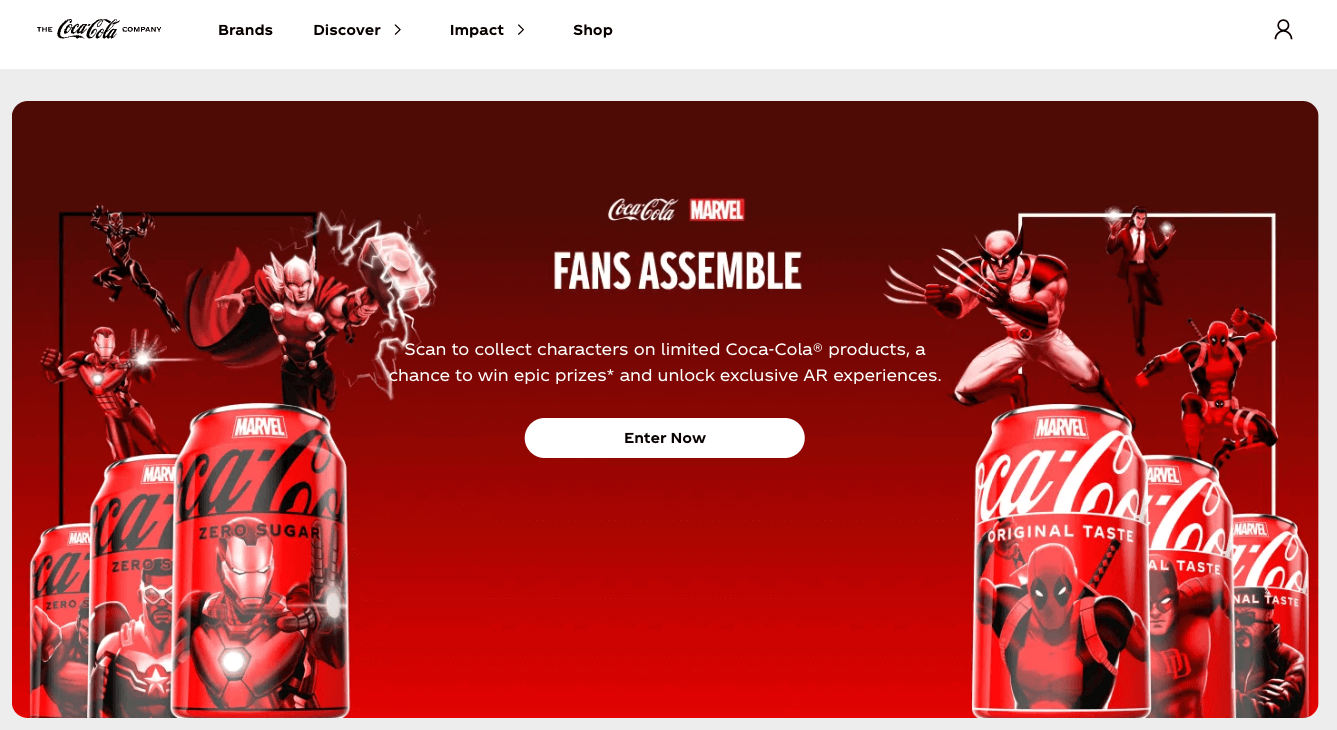Drive sales on autopilot with ecommerce-focused features
See FeaturesBrand strategy refers to a plan that outlines how a company will build, develop, and maintain its brand identity to achieve its business goals. It includes brand positioning, messaging, visual identity, and customer experience.
Creating a solid brand strategy is key for businesses wanting to stand out.
Businesses can build a strong brand identity by clearly communicating their value to their target audience. This leads to greater customer loyalty and advocacy, and helps to create differentiation and foster long-term relationships with customers and stakeholders.
This article will define brand strategy, its importance, and the steps to make an effective one. We’ll also cover common mistakes, successful examples, and tips for integrating your strategy across various channels.
What is brand strategy?
Brand strategy is a long-term plan defining how a company develops and maintains its brand identity to achieve its objectives. It involves creating a unique and consistent brand experience that resonates with the target audience and sets the company apart from its competitors.
Why is brand strategy important?
An effective brand strategy is essential for creating a strong and recognizable brand that resonates with customers. It helps businesses stand out from competitors, foster brand loyalty, and drive long-term growth. It also guides decision-making, ensures consistency across all touchpoints, and helps attract and keep customers.
How to develop a brand strategy?
Developing a brand strategy requires careful planning and execution. Following the steps below, you can create a strong, cohesive brand identity that resonates with your target audience and drives long-term success.
Every individual step is crucial in building a comprehensive brand strategy that sets your company apart and fosters customer loyalty.
1. Define your brand identity
The foundation of a successful brand strategy lies in defining your brand identity. This involves identifying your company’s mission, vision, values, and unique selling proposition (USP).
Creating a distinct brand persona is also essential. This lays the groundwork for a strategy that resonates with your audience and drives success.
2. Conduct market research
Market research is critical for a successful brand strategy. Understanding your target audience and analyzing your competitors can help you make informed decisions.
Gather insights into your audience’s demographics, behaviors, and preferences to understand them better and segment your audience to tailor your communication and offerings.
Analyzing competitors helps identify differentiation opportunities. Use both quantitative and qualitative methods to gather insights. Regularly monitor market trends, feedback, and competitor activities to adapt your brand strategy.
Thorough research helps build a strategy that resonates with your audience and drives growth.
3. Develop brand messaging
Creating compelling brand messaging is vital. The messaging should communicate your unique value proposition, resonate with your audience, and differentiate your brand.
A brand story encapsulates your company’s origin, values, mission, and purpose. It should be authentic and emotionally resonant. You can start crafting one by using this template:
- Introduction: Hook your audience with a compelling opening
- Conflict: Describe the problem your brand solves
- Resolution: Explain how your brand solves the problem
- Outcome: Highlight the positive impact on customers and the community
Messaging pillars guide your communication across channels. Examples include:
- Innovation: Emphasizing cutting-edge products or services
- Sustainability: Highlighting environmental and social responsibility
- Customer-centricity: Showcasing exceptional customer experiences
Your messaging should be clear, consistent, and memorable, using language that resonates with your audience and reflects your brand’s personality. Regularly review and refine your messaging to keep it relevant.
4. Create a visual brand identity

A strong visual brand identity is essential for recognition. Your visual identity should be consistent across all touchpoints, from your website to product packaging. Key elements include your logo, color palette, typography, and imagery.
Your logo is the centerpiece of your visual identity, so for it to reflect your brand’s personality and values, create with these points in mind:
- Keep it simple, memorable, and versatile
- Ensure it aligns with your brand’s personality and audience
- Choose colors and typography that complement your identity
- Test your logo across different sizes and applications
Your color palette should evoke the desired emotions and associations, so it’s best to:
- Choose colors that align with your brand’s personality and values
- Ensure it’s visually appealing and harmonious
- Consider the cultural and psychological implications of colors
- Use your color palette consistently across all touchpoints
Typography conveys your brand’s personality and tone of voice, which is why you should:
- Choose legible, visually appealing, and brand-aligned fonts
- Limit your font selection to two or three typefaces
- Establish a hierarchy of font sizes and weights
- Ensure readability across various devices and media
5. Establish brand voice and tone
Brand voice and tone help you communicate effectively with your audience. Your brand voice is the unique personality and style of your communication, while your tone is the emotional inflection you apply in different contexts.
By maintaining a consistent brand voice and tone you can build a strong, recognizable identity that allows you to connect emotionally with your audience and convey your values and personality. When defining your voice, consider:
- Your brand’s traits, like friendly, authoritative, or humorous
- Your audience’s preferences and communication style
- The key messages and values you want to convey
6. Develop brand touchpoints
Brand touchpoints are the different points of interaction between your brand and your customers. They shape customer perceptions, experiences, and loyalty. Common touchpoints include:
- Website: Communicate your identity, value proposition, and offerings
- Social media: Engage with your audience, share content, and build awareness and loyalty
- Email marketing: Nurture leads, promote products or services, and keep your brand top-of-mind
- Advertising: Reach new audiences and reinforce your message online and offline
- Product packaging: Reflect your identity and create a positive unboxing experience
- Customer service: Impact perceptions and loyalty through phone, email, or live chat
Consistency across all touchpoints is essential for a cohesive brand experience. Inconsistencies can confuse customers and weaken your identity. To maintain consistency:
- Develop brand guidelines that outline your visual identity, messaging, and tone for all touchpoints
- Train your team members to understand and embody your values and communication style
- Monitor customer feedback and interactions to identify areas for improvement
7. Create a brand experience
Creating a good brand experience is important for gaining customer loyalty. It includes how customers perceive and feel about your brand overall. This means keeping your brand promise, exceeding customer expectations, and making emotional connections.
Focus on these key aspects:
- Consistency: Keep your messaging, identity, and interactions consistent
- Emotional connection: Understand your audience’s needs and craft experiences that resonate with them
- Personalization: Tailor your experience to individual preferences using data and insights
- Exceeding expectations: Surprise and delight customers with exceptional service
- Continuous improvement: Gather feedback, monitor trends, and iterate to stay relevant and competitive
8. Implement brand guidelines
Brand guidelines are rules and standards that explain how to represent your brand across all touchpoints. They provide a reference for your team members, partners, and stakeholders to ensure consistency and recognizability.
Implementing and maintaining brand guidelines helps with:
- Consistency: Maintain a consistent visual identity and messaging across all channels
- Clarity: Provide clear instructions and examples to eliminate confusion
- Efficiency: Create materials more quickly without constant review and approval
- Protection: Protect your brand’s integrity by preventing misuse or unauthorized alterations
9. Measure and adjust
Measuring the effectiveness of your brand strategy and making data-driven adjustments are crucial for long-term success. By setting key performance indicators (KPIs) and monitoring your brand’s performance, you can identify areas for improvement and optimize your strategies.
When setting KPIs, consider metrics that align with your overall business objectives. Some common brand KPIs include:
- Brand awareness: Measure how well your audience recognizes and recalls your brand
- Brand engagement: Evaluate audience interaction through social media likes, comments, shares, and email metrics
- Brand sentiment: Assess emotional responses and perceptions through reviews, social media sentiment analysis, and net promoter score (NPS)
- Brand loyalty: Measure repeat purchase rate, customer retention, and customer lifetime value (CLV)
- Brand equity: Estimate the overall value of your brand as an intangible asset
To effectively measure and analyze your brand’s performance, follow these steps:
- Identify the most relevant KPIs for your strategy and set clear targets
- Establish a baseline by measuring your current performance across each KPI
- Regularly collect and analyze data from various sources
- Share results with stakeholders and develop action plans for improvement
10. Maintain consistency and flexibility
Another important factor is balancing consistency and flexibility. Consistency helps establish trust and recognition, while flexibility allows you to adapt to changing conditions.
Striking the right balance keeps your brand relevant and resilient.
To maintain consistency:
- Adhere to your brand guidelines across all touchpoints
- Train your team to understand and embody your values and communication style
- Foster a brand-centric culture where all employees embrace and champion your brand
To maintain flexibility:
- Stay attuned to market trends, competitor activities, and customer preferences
- Use data-driven insights to inform your strategy decisions
- Be open to change and willing to evolve your strategy as needed
What are the components of brand strategy?
A comprehensive marketing brand strategy consists of several key components that work together to create a cohesive and compelling brand identity. These components include:
Brand positioning
Brand positioning defines how your brand is perceived in the market and how it differentiates itself from competitors. It involves identifying your target audience, understanding their needs and preferences, and crafting a unique value proposition that sets your brand apart.
Brand identity
Brand identity encompasses the visual and verbal elements that make your brand recognizable and memorable. This includes your logo, color palette, typography, imagery, and messaging. Your brand identity should be consistent across all touchpoints and reflect your brand’s personality and values.
Brand messaging
Brand messaging refers to the key messages and stories that communicate your brand’s unique value proposition and resonate with your target audience. It includes your brand’s tagline, mission statement, and key messaging pillars, which guide your communication efforts.
Target audience segmentation
Target audience segmentation involves dividing your customer base into distinct groups based on shared characteristics, such as demographics, psychographics, and behaviors. This allows you to tailor your brand communication and offerings to each segment’s needs and preferences.
Competitive analysis
Competitive analysis involves researching and evaluating your competitors’ brand strategies, strengths, and weaknesses. This helps you identify opportunities for differentiation and develop a brand strategy that sets you apart in the market.
Brand architecture
Brand architecture defines the structure and hierarchy of your brand portfolio, including sub-brands, product lines, and endorser brands. It helps you organize and manage your brand assets, ensuring clarity and consistency across your offerings.
Brand experience
Brand experience encompasses all customer interactions and touchpoints with your brand, from your website and social media presence to customer service and product packaging. Creating a positive and consistent brand experience is crucial for building customer loyalty and advocacy.
Common mistakes to avoid in brand strategy development
Developing a strong brand strategy is a complex and time consuming task, and it’s normal that some companies encounter pitfalls along the way. You can create a more effective and impactful brand strategy by being aware of these common mistakes and taking proactive steps to avoid them:
- Lack of clarity in brand identity and messaging
A poorly defined brand identity and inconsistent messaging can confuse customers and weaken your brand’s impact. To avoid this mistake, clearly articulate your brand’s mission, values, personality, and unique value proposition. - Failing to conduct thorough research
Developing a brand strategy without a deep understanding of your target audience, market, and competitors can lead to missed opportunities. Conduct extensive research to gather insights into customer needs, preferences, behaviors, industry trends, and competitive landscapes. - Overlooking the importance of employee engagement
Your employees are the face of your brand and play a crucial role in delivering your brand promise. Neglecting to engage and educate your employees about your brand strategy can lead to inconsistent experiences and weaken your brand’s impact. - Focusing too heavily on short-term tactics
While short-term tactics can generate quick wins, overemphasizing them at the expense of long-term strategic planning can undermine your brand’s enduring success. Strike a balance between short-term and long-term initiatives, ensuring that your brand strategy is designed to drive sustained growth and value over time. - Ignoring the need for flexibility and adaptability
In today’s rapidly evolving market landscape, brands that fail to adapt are at risk of becoming irrelevant. While consistency is important, your brand strategy should allow flexibility to respond to changing customer needs, market conditions, and industry trends. - Neglecting to measure and monitor performance
Without regular measurement and monitoring, it’s impossible to assess the effectiveness of your brand strategy and make informed improvements. Establish clear KPIs and metrics to track your brand’s performance, such as brand awareness, engagement, and loyalty.
By proactively addressing these common mistakes and incorporating best practices into your brand strategy development process, you can create a strong, differentiated, and enduring brand that drives long-term business success.
Examples of successful brand strategies
Studying successful brand strategy examples can provide valuable insights and inspiration for businesses looking to develop effective branding approaches. Here are three well-known companies that have implemented successful brand strategies:
1. Apple

- Apple’s brand strategy focuses on innovation, simplicity, and premium user experience
- The company’s sleek product design, intuitive user interfaces, and seamless ecosystem integration have helped it build a loyal customer base and maintain a strong brand identity
- Apple’s brand strategy has positioned the company as a leader in the tech industry, commanding premium prices and driving long-term growth
2. Nike

- Nike’s brand strategy centers around inspiring and empowering athletes of all levels
- The company’s powerful storytelling, celebrity endorsements, and emotionally resonant advertising campaigns have helped it build a strong connection with its target audience
- Nike’s consistent brand messaging and innovative product offerings have established the company as a global sports and fitness industry leader
3. Coca-Cola

- Coca-Cola’s brand strategy emphasizes happiness, togetherness, and nostalgia
- The company’s iconic logo, consistent visual identity, and memorable advertising campaigns have helped it maintain a strong brand presence across generations
- Coca-Cola’s brand strategy has focused on creating positive emotional associations and fostering a sense of community, solidifying its position as one of the world’s most recognizable and valuable brands
Key takeaways from these brands
- Developing a clear and differentiated brand identity that resonates with the target audience
- Consistently communicating the brand’s core values and messaging across all touchpoints
- Investing in innovative products, memorable advertising campaigns, and positive customer experiences
- Fostering emotional connections and a sense of community around the brand
- Continuously adapting and evolving the brand strategy to stay relevant in changing market conditions
Integrating brand strategy across different channels
Integrating your brand strategy across various channels is crucial for maintaining consistency and building a strong brand identity. Here are some tips for ensuring coherence in messaging and brand experience:
Email marketing
Ensure that your email marketing campaigns align with your brand identity and messaging. Use consistent visual elements, such as your logo and color palette, and maintain a clear and engaging brand voice in your email copy. Omnisend is a powerful email and SMS marketing automation platform that can help you create on-brand campaigns and deliver personalized customer experiences.
Social media
Develop a social media strategy that reflects your brand identity and engages your target audience. Use a consistent visual style and tone of voice across all social media platforms, and create content that aligns with your brand values and messaging pillars.
Website and digital platforms
Your website and digital platforms should provide a seamless and engaging brand experience. Ensure that your website design, content, and functionality align with your brand identity and meet the needs and expectations of your target audience.
Offline marketing
Integrate your brand strategy into offline marketing efforts, such as print advertising, event marketing, and product packaging. Use consistent visual elements and messaging to create a cohesive brand experience across all touchpoints.
Customer service
Train your customer service team to embody your brand values and provide a consistent brand experience. Ensure that your team is equipped with the knowledge and resources to effectively communicate your brand messaging and resolve customer issues that align with your brand identity.
Quick sign up | No credit card required
FAQ
Is branding the same as brand strategy?
While branding and brand strategy are closely related, they are different.
Branding refers to the visual and verbal elements that make your brand recognizable, such as your logo, color palette, and messaging. On the other hand, brand strategy is the overarching plan that guides how you develop and maintain your brand identity to achieve your business goals.
Differences between brand strategy, business strategy, and marketing strategy
Brand strategy, business strategy, and marketing strategy are all essential components of a successful business, but they serve different purposes:
- Brand strategy focuses on developing and maintaining a strong and recognizable brand identity that resonates with your target audience and sets you apart from competitors
- Business strategy outlines your company’s overall direction, goals, and objectives and the actions and resources required to achieve them
- Marketing strategy defines how you will promote and communicate your brand and offerings to your target audience, including tactics such as advertising, content marketing, and social media
While each strategy — brand, business, and marketing — has a distinct focus, they should all work together to support your overall business objectives and create a cohesive and effective brand experience.
TABLE OF CONTENTS
TABLE OF CONTENTS


No fluff, no spam, no corporate filler. Just a friendly letter, twice a month.

 OFFER
OFFER







